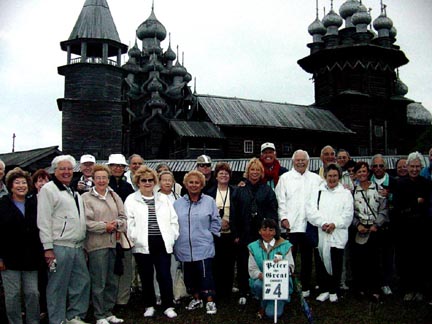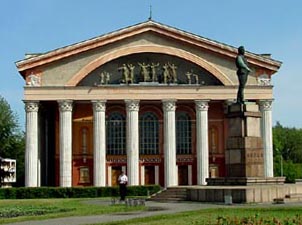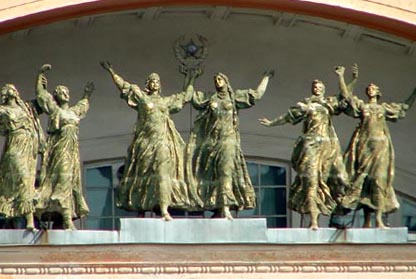
After crossing Onega Lake at night, we arrived at the small island of Kizhi to begin a walking tour of an Open Air Museum of Wooden Architecture. At the beginning of the 15th century Kizhi was the centre of a large administrative region. The present Kizhi houses a state museum of wooden architecture of the North. A number of buildings brought from different places of Karelia are displayed here for review.
Among the small religious buildings one of the most interesting is a tiny church of St. Lazarus delivered here from Murom monastery. It is believed to have been built in the 14th century.
The secular structures are represented by a number of spacious wooden peasant houses of the 19th century typical for the North. They had under one roof both living rooms and different sections for the household such as a store-room for tools and instruments, a stable, a cattle-shed, etc. The most representative is the Oshevnev's house the decoration of which has some features of urban stone architecture.
The Elizarov's house built without a chimney has wonderful proportions. It is distinguished from the other houses by these proportions and by severe simplicity of decoration. Among the household structures one should note a barn dating back to 19th century brought from the village Kokkoila in Western Karelia. Carved ornamentation is a characteristic feature of Karelian art. Peasant Shchepin's house is much more modest.
The park showed us period bathhouses and even a windmill but the highlight was the Transfiguration Church (built in 1714) and the Church of the Intercession (erected in 1764). In place of some old buildings that were burnt down at the end of 17th century, between the two churches, there is a belltower erected in 1874. Visitors from around the world come to the island to admire the famous 22-domed Transfiguration Church, which is under the protection of UNESCO. Erected in 1714, this wonder of wooden architecture was built without a single nail! Today, an elaborate water system is in place to protect the structures from fire.
Craftsmen demonstrated the talents used but all too soon it was time to have one last look. About 11a.m. we said goodby to Kizhi island and headed toward the city of Petrozavodsk.

Later it became a place of exile for opponents of the tsars and later the Bolsheviks.
Today it is a thriving modern city of 265,000 people, with attractive theatres, sport centres, museums, galleries.
